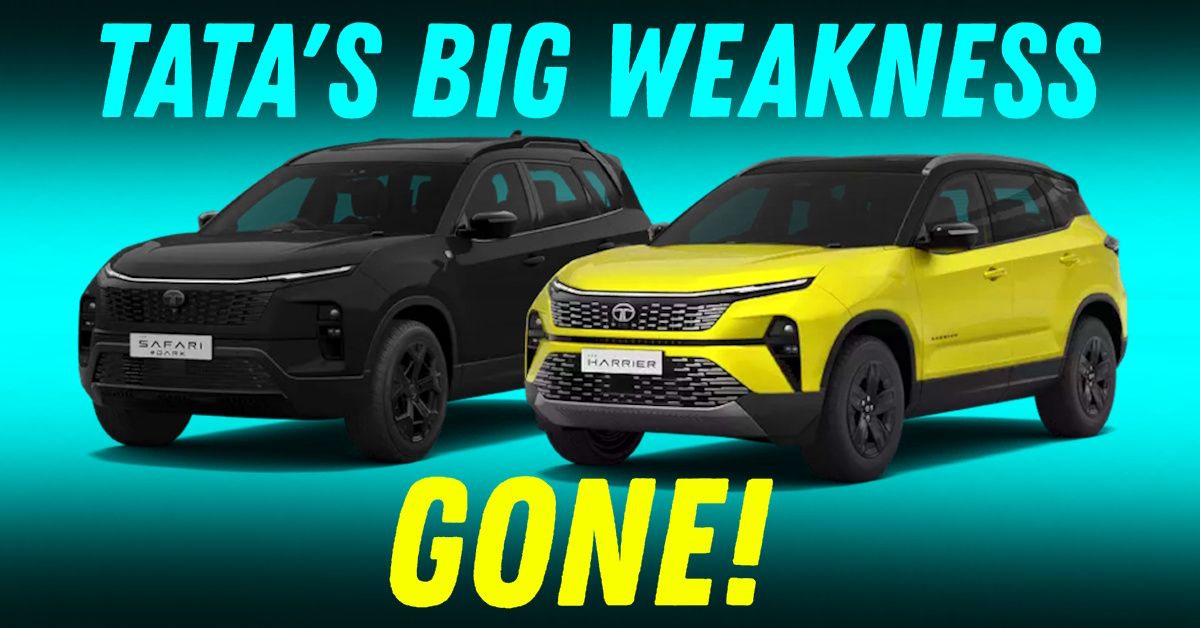Tata Had a Huge Weakness - And Now It’s Gone!


For years, Tata Motors built some of its most successful models around a borrowed heart. Whether it was the Indica Vista or the Zest or even the Harrier and Safari, the engines underneath came with strings attached. While the company made massive strides in design, safety, and technology, its dependence on engines sourced from Fiat remained a glaring vulnerability. But that chapter is finally closed. Tata now owns full development rights to the 2-litre diesel engine that powered a large chunk of its lineup, and it marks a major turning point in the company’s long-term powertrain strategy.
If you rewind to the late 2000s and early 2010s, you’ll remember that Fiat’s 1.3-litre and 1.9-litre Multijet diesel engines were the industry standard in India. Maruti Suzuki, Tata, Chevrolet, and even Fiat itself used versions of these engines across hatchbacks, sedans, and SUVs. As emission norms tightened and customer expectations changed, Tata moved on to the 2-litre Kryotec diesel – which was essentially based on Fiat’s foundational Multijet architecture but heavily reworked for Tata’s needs.
However, Tata never had complete freedom to tinker with or scale that engine independently. Development rights, intellectual property constraints, and the need for licensing made innovation slow and expensive. It was a cost-effective starting point back then, but in 2025, it had become a handbrake on progress.
The recent announcement that Tata Motors has gained full control over the development of its 2-litre diesel engine may not make headlines like a new EV or SUV launch, but in engineering and strategic terms, it’s massive.
This means Tata is no longer beholden to legacy limitations. It can now redesign components, improve emissions compliance, and optimise the engine for hybrid applications or alternate fuels like bio-diesel or even hydrogen blends in the future.
More importantly, this move gives Tata the flexibility to scale diesel offerings in segments where petrol and EVs may not yet be viable. Think rural MPVs, commercial pickups, or export markets where diesel still dominates. That kind of agility is vital in today’s regulatory environment, where norms can shift dramatically with little warning. Plus, it allows Tata to match the more powerful Mahindra engines.
This step is also part of a larger trend that Tata Motors is aggressively pursuing, reducing reliance on third-party tech and building in-house expertise. We’ve seen this with its EV architecture, battery packs, and software platforms, and now it’s happening with diesel engines too.
In a future where hybridisation and emissions compliance will become harder to meet, owning your engine blueprint is not a luxury. It’s a necessity. With Euro 7 and BS7 norms on the horizon, Tata can now adapt quickly without waiting on or paying licensing fees to another brand.
Additionally, the move de-risks Tata’s exports strategy. As the company eyes markets in Africa, South America, and ASEAN nations, it will need to tailor its engines to local fuel quality and usage patterns. Full control over engine architecture allows just that.
For existing and future Tata owners, this is good news. Expect improved diesel refinement, better mileage tuning, and potentially even new variants that were earlier not feasible due to platform restrictions. It also boosts the long-term viability of diesel offerings, at least in segments where it still makes practical sense.
More subtly, this also improves Tata’s after-sales control. With no external IP entanglements, servicing, part supply, and upgrades can be handled more smoothly. That will likely translate into better ownership experiences, especially in Tier-2 and Tier-3 cities.
In an era when car brands are falling over each other to announce EV breakthroughs or ADAS features, Tata’s move to gain full control over its diesel engine might not sound glamorous. But it’s a foundational shift.
For a company that has often been held back by powertrain constraints, this development finally breaks those chains. And in doing so, it plugs one of the last major weaknesses in Tata’s otherwise impressive product and tech arsenal.
With this, Tata Motors is no longer just building safer, better-designed cars. It’s building them on its own terms.